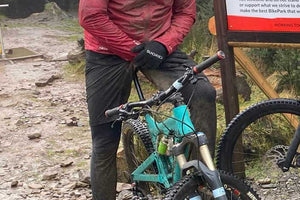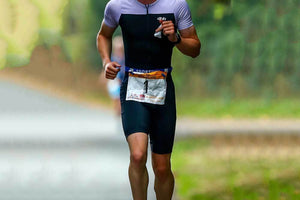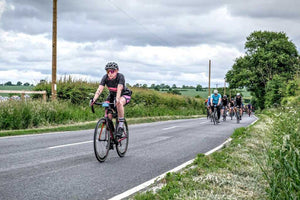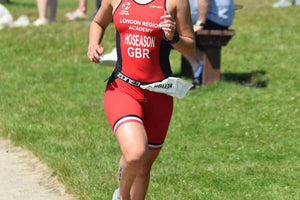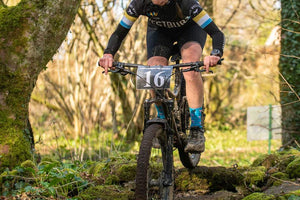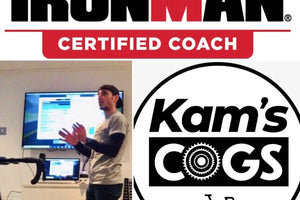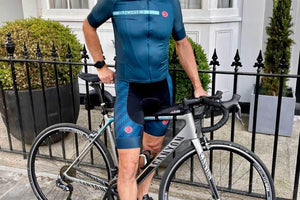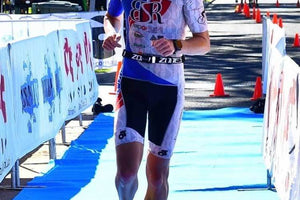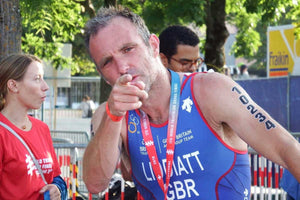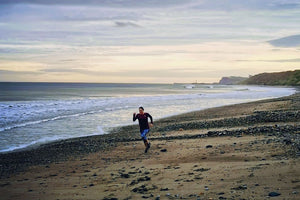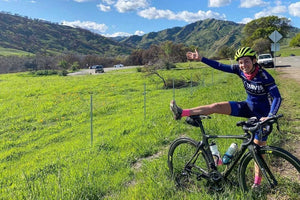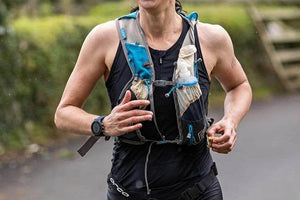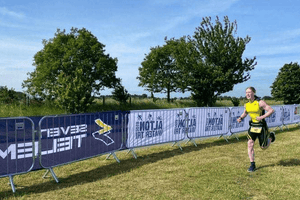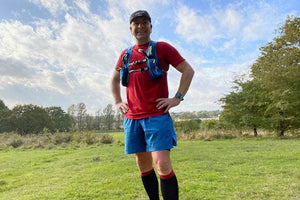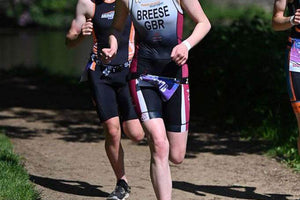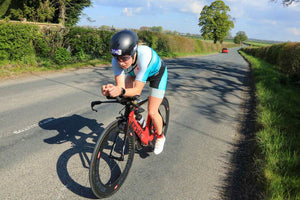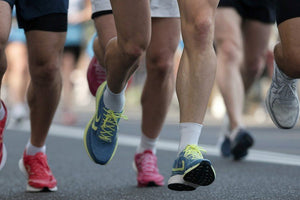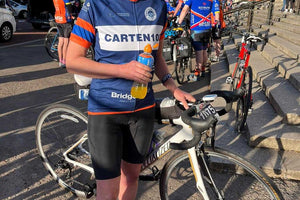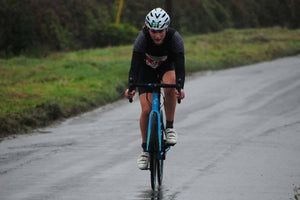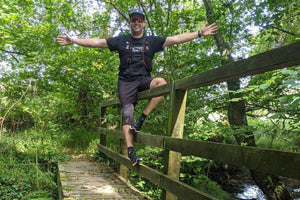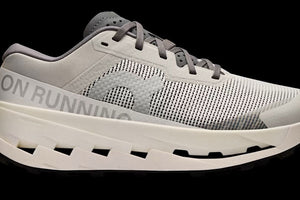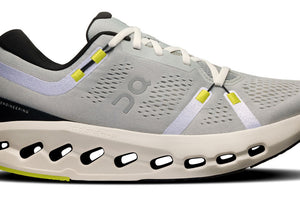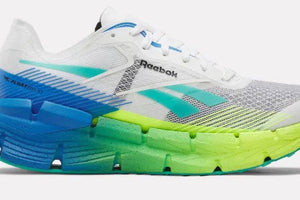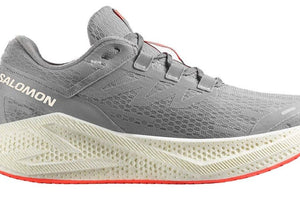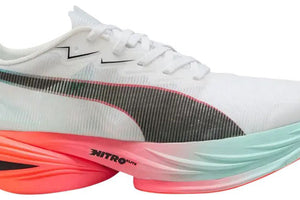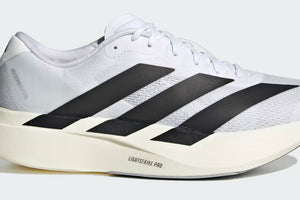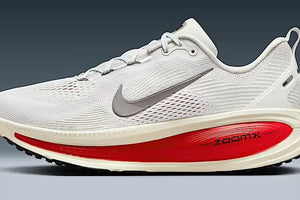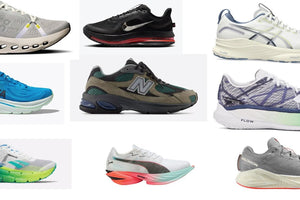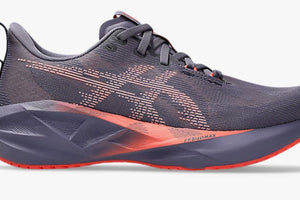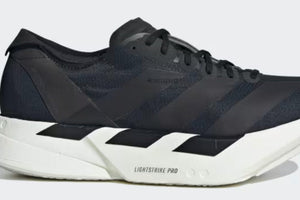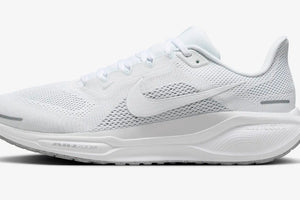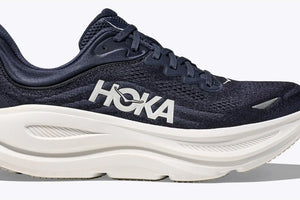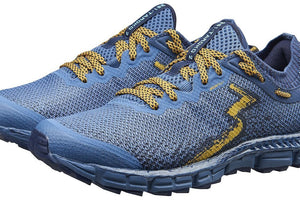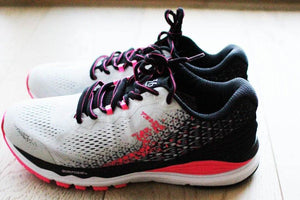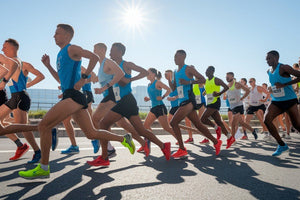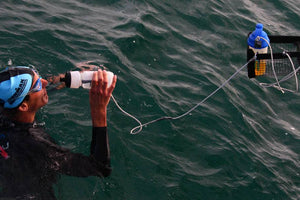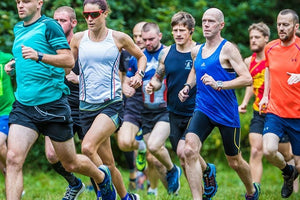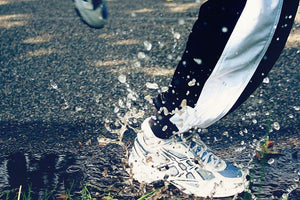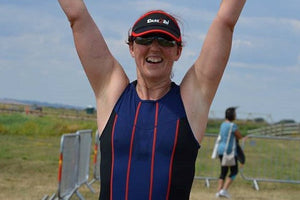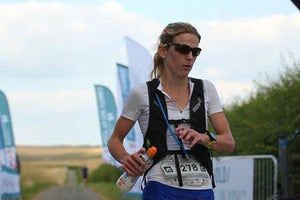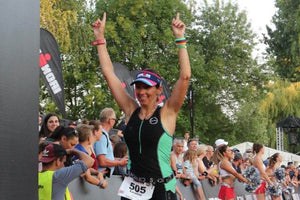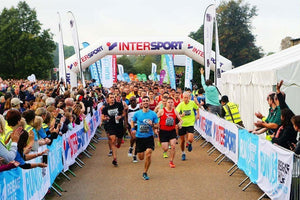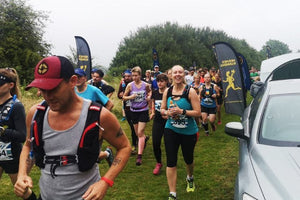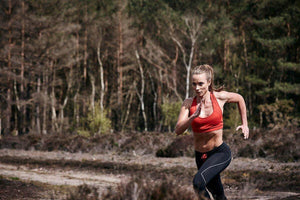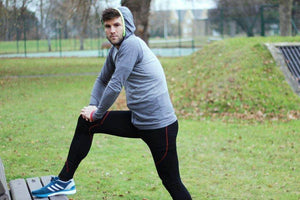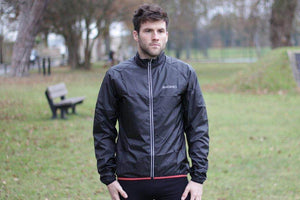Let's be honest: looking out the window at a dark, wet, and freezing Tuesday evening doesn't exactly scream "peak athletic performance." It screams "sofa, blanket, and Netflix."
But here is the hard truth-and the exciting opportunity. The runners standing on the podiums, smashing PBs, and looking effortless in the spring of 2026 aren't built in April. They are built right now.
For a long time, the "off-season" was viewed as a hibernation period. You'd jog a few slow miles (if the weather held up) and mostly rest on your laurels. But the game has changed. The philosophy of endurance training has fractured and reformed. We are seeing a massive shift away from "maintenance" toward "pre-competitive optimisation."
If you want next year to be your best year yet, we need to stop thinking of winter as a time to survive, and start viewing it as a time to thrive. We've dived deep into the training logs of the elites-from the Norwegian double-threshold devotees to the high-mileage grinders-to bring you a comprehensive, yet fun, guide to winter conditioning.
Here is how you turn the cold months into your secret weapon.
1. The New Rules of Base Building
You might have heard of "base building." Traditionally, this meant running long, slow miles to build aerobic capacity-often called the "Lydiard" model. While the aerobic engine is still king, the modern approach is a bit more nuanced.
Think of your fitness like a house. In the past, we thought winter was just about pouring a massive concrete slab (aerobic volume) and waiting for spring to build the walls (speed). The problem? If you do zero intensity for four months, your nervous system goes into shock the moment you try to run fast in March. You risk injury and delayed race readiness.
For 2026, the goal is "Pre-Competitive Optimisation." We aren't just lungs and a heart attached to legs; we are complex biomechanical machines.
The Strategy: High-End Aerobic Instead of just plodding along, we want a "positive feedback cycle." We need volume to fuel mitochondrial growth (the power plants of your cells), but we also need to keep the spark alive.
-
Don't just "chop wood": Logging miles is great, but don't let your nervous system fall asleep.
-
Light the match: Sprinkle in strides and controlled neuromuscular stimuli. This keeps your fast-twitch fibres awake without burning them out.
The 10% Rule If you are planning to ramp up your mileage, do it with maths, not ego. A linear progression of about 10% weekly is the safety limit. And every third or fourth week? Cut back. Let your body absorb the work. You are building a skyscraper; let the cement dry.
2. The Norwegian Secret (Democratised)
If you follow professional running, you have heard of the "Norwegian Method," popularised by the Ingebrigtsen brothers. It sounds intimidating, but the core principle is actually incredibly runner-friendly.
The Philosophy: Control, Don't Crush The old school way to run a "tempo" run was to go out and hammer for 40 minutes until you were gasping for air. You'd feel like a hero, but you'd be wrecked for three days.
The Norwegian approach flips this. It prioritises the volume of intensity over the intensity of the rep. They stay strictly in a "threshold" zone (where lactate is stable). They break the work up into intervals so they can do more of it without killing themselves.
How to do this without a lab coat: You don't need to prick your ear for blood lactate samples every 5 minutes to benefit from this.
-
The vibe: "Comfortably hard." You should be able to speak in short phrases, but not full sentences.
-
The workout: Instead of one big 20-minute block, try 5 x 6 minutes or 10 x 3 minutes with short (60-90 second) rests.
-
The result: You get way more time in the "growth zone" without the structural damage of an all-out effort.
The "Double Threshold" (Proceed with Caution) The pros do this twice a day (Double Threshold). For us mortals? That is a recipe for divorce and shin splints. A modified version for the 2026 amateur is to do one solid threshold session a week, or perhaps a bigger volume block on the weekend. Keep it controlled. If you finish the workout feeling like you could have done one more rep, you did it right.
3. The Indoor Laboratory: Make Peace with the Treadmill
Let's banish the word "dreadmill." For the 2026 season, the treadmill isn't a backup plan; it's a laboratory.
Jakob Ingebrigtsen loves the treadmill. Why? Because he is a "control freak" about his training. Outside, you battle wind, ice, puddles, and hills. Inside, you can lock in a specific pace and heart rate and just execute.
The "Control Freak" Protocol
-
Incline: Set it to 0.5% or 1.0% to mimic outdoor air resistance.
-
Variation: Don't be a robot. Vary the incline slightly throughout the run to engage different muscles (glutes, hamstrings) and prevent repetitive strain.
-
Tech Tip: Treadmill consoles are notorious liars. They are rarely calibrated perfectly. Use a foot pod (like a Stryd or COROS POD 2) to get your actual pace and distance. Trust the pod, not the machine.
Try These Winter Indoor Workouts:
-
The Alternating Quarters: Run 0.25 miles at 10k pace, then 0.25 miles at a "float" (about 10-15 seconds slower per mile). Repeat for 3-4 miles. It makes the time fly and teaches your body to clear lactate while moving fast.
-
Ingebrigtsen Hill Reps: Set the treadmill to a steep incline (6-8%). Run hard for minutes or distances (e.g. 10 x 200m). This builds massive heart strength without the pounding impact of sprinting on the flat.
4. Lift Heavy Objects (To Run Faster)
If you are still doing sets of 50 reps with tiny pink dumbbells, stop. The era of "endurance lifting" for runners is over.
For 2026, we are looking at Heavy Resistance Training.
-
The Science: Lifting heavy (low reps, high weight) improves your Running Economy. It recruits more motor units, meaning you use less oxygen to run at the same speed. You literally become a more fuel-efficient car.
-
The Prescription: 4-5 sets of 4-6 reps. You want to be lifting >85% of your max.
-
The Moves: Hex-bar deadlifts, back squats, split squats. Move the weight with intent.
Don't Forget Plyometrics Plyometrics train your tendons to be like springs. However, cold tendons snap easier than warm ones. Progression is key.
-
Nov/Dec: Focus on landing mechanics (drop squats).
-
Jan: Add force (box jumps).
-
Feb: Add elasticity (hopping and bounding).
5. Bio-Hacking: Sauna & Fuel
We can't all go to training camps in Kenya, but we can engineer our environment.
The Poor Man's EPO: The Sauna Sitting in a sauna isn't just relaxing; it's a performance enhancer. Consistent sauna use (20-30 mins post-run) increases plasma volume. It essentially mimics the effects of altitude training.
-
The Protocol: Get in the sauna immediately after your run.
-
The Benefit: When spring arrives and the temps rise, your body will be hyper-efficient at cooling itself, and you'll have more blood volume to pump oxygen to your legs.
Fuel the Furnace Winter running burns more calories. Your body is working overtime just to keep you warm (thermogenesis).
-
Shivering: Can deplete glycogen 5-6 times faster than resting.
-
Recovery: Drink something warm. Hot chocolate with protein powder isn't just delicious; it's scientifically sound for simultaneous rewarming and refueling.
6. The Mental Game: Be a Stoic
Finally, the biggest gain you'll make this winter is between your ears. Elite runners use Stoic philosophy: Control the Controllables.
You cannot control the darkness. You cannot control the sleet. You can control your gear, your effort, and your attitude.
Cognitive Reappraisal This is a fancy psychological term for "reframing."
-
Old thought: "This wind is going to ruin my split times. I hate this."
-
New thought: "This wind is adding resistance. It's making me stronger. If I can run in this, race day will feel easy."
Put a visual cue somewhere you see every morning-write "Boston 2026" or "Sub-4 Hour" on a post-it note on your alarm clock. Use "Mistletoe Motivation"-seasonal cues to trigger your discipline.
The Sundried Roundup
We know everyone is at a different stage in their journey. Whether you are chasing a sub-3 marathon or just trying to survive your first 5k, here is how to apply these 2026 principles to your life.
What are the pros wearing? The "one shoe fits all" era is dead. For winter 2026, specificity is key.
-
The Wet & Slushy: Saucony Peregrine 15 GTX (Gore-Tex is your friend).
-
The Ice Rink: Salomon Winter Cross Spike (carbide spikes that dig into ice).
-
The Data Geek: Pros are ignoring treadmill screens and wearing the COROS POD 2 or Stryd sensors for 3D motion tracking and accurate indoor pacing.
How can I build this into my life? Consistency > Heroics. Don't try to replicate a pro schedule. Aim for a "High-End Aerobic" model. Keep your easy days truly easy so you have the energy to hit the gym or that one threshold session hard. Use the weekend for your volume when you have daylight.
The budget approach? You don't need a £3,000 treadmill.
-
Kit: Layer up with what you have. A windbreaker over a wool jumper works wonders.
-
Gym: Bodyweight squats and lunges are free. Fill a backpack with books for weighted squats.
-
Tech: Run by feel (RPE). If you can't talk, you're going too fast for a base run.
Middle of the road approach? (I am serious but not all-in)
-
Kit: Invest in one pair of dedicated winter trail shoes (like the ASICS Trail Scout).
-
Gym: Get a basic gym membership for the heavy lifting and treadmill access for icy days.
-
Plan: Commit to one "Threshold" workout a week to keep that engine revving.
The premium approach? (I want to chuck everything at this)
-
Home Setup: NordicTrack Commercial 2450 or Peloton Tread+ for slat-belt technology that mimics the road.
-
Recovery: Home sauna blanket or infrared sauna sessions.
-
Bio-Hacks: Ketone esters for recovery and a continuous glucose monitor to dial in your winter fueling.
-
Coaching: Hiring a coach who uses the Norwegian principles to analyse your lactate data.
Pushed for time, how can I keep up? Intensity is the time-crunched runner's best friend. If you only have 45 minutes, don't plod. Do a Fartlek (Speed play).
-
Try: 30 seconds hard, 30 easy; 60 hard, 60 easy; 90 hard, 90 easy. Repeat. You hit every energy system and you're done in under an hour.
I have 3 hours a week, what can I do? Prioritise strength and stability.
-
Session 1: 45 min Run (include some 1-minute fast surges).
-
Session 2: 45 min Run (steady).
-
Session 3: 45 min Full Body Strength (Squats, Lunges, Core).
-
Session 4: 45 min Run (Intervals/Hills).
-
Quality over quantity here. Don't just run junk miles.
I can fit in training 7 days a week. How can I maximise this? Careful, tiger. Volume is a weapon, but it cuts both ways.
-
Structure: Adopt the 10% rule strictly.
-
Recovery: Dedicate one day to "Active Recovery" (very slow jog or swim).
-
Doubles: If you want to introduce double days (running morning and evening), keep the second run incredibly easy.
-
Lift: Ensure you are lifting heavy 2x a week to support that mileage.
Winter Run Training
Top 10 Tips to keep moving when the temperature drops.
Don't Hibernate
View winter as "Pre-Competitive Optimisation," not time off. Consistency now builds the engine for summer PRs.
Embrace the Treadmill
Use it for precision interval work, not just as a backup when it rains. It's a tool for controlled speed.
Lift Heavy
Incorporate high weight, low reps to improve running economy. Build the strength that protects joints on frozen ground.
Fuel the Cold
Eat a carb snack before running. The cold burns glycogen faster to maintain core temperature.
Get Grippy
Buy specific winter shoes or trail runners. Slipping on ice strains your groin and hamstrings unnecessarily.
Sauna Sessions
Use heat exposure to boost blood volume. It acts as nature's blood doping when you return to the cold.
The Norwegian Way
Break up your tempo runs into intervals (e.g., 5x6 mins) to do more total work with less systemic fatigue.
Trust the Pod
Use a foot pod (like Stryd or Zwift) for indoor stats. Treadmill screens often lie about your actual pace.
Reframe the Weather
A headwind isn't a nuisance; it's resistance training. Mental resilience is built in bad weather.
Set a Spring Goal
Put a tangible race on the calendar. It's the only thing that gets you out the door when it's pitch black at 6 AM.
See you on the roads (or the treadmill). Let's smash 2026.





